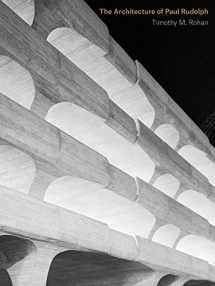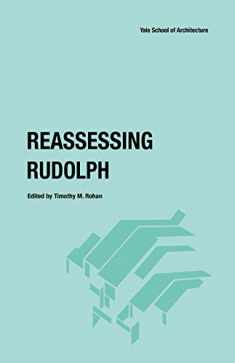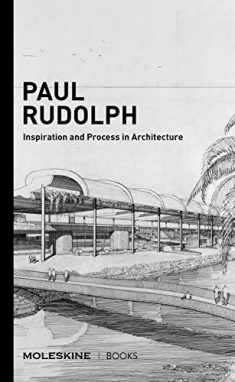
The Architecture of Paul Rudolph
ISBN-13:
9780300149395
ISBN-10:
0300149395
Edition:
Illustrated
Author:
Timothy M. Rohan
Publication date:
2014
Publisher:
Yale University Press
Format:
Hardcover
290 pages
Category:
Individual Architects & Firms
,
Architecture
,
History
FREE US shipping
Book details
ISBN-13:
9780300149395
ISBN-10:
0300149395
Edition:
Illustrated
Author:
Timothy M. Rohan
Publication date:
2014
Publisher:
Yale University Press
Format:
Hardcover
290 pages
Category:
Individual Architects & Firms
,
Architecture
,
History
Summary
The Architecture of Paul Rudolph (ISBN-13: 9780300149395 and ISBN-10: 0300149395), written by authors
Timothy M. Rohan, was published by Yale University Press in 2014.
With an overall rating of 3.5 stars, it's a notable title among other
Individual Architects & Firms
(Architecture, History) books. You can easily purchase or rent The Architecture of Paul Rudolph (Hardcover) from BooksRun,
along with many other new and used
Individual Architects & Firms
books
and textbooks.
And, if you're looking to sell your copy, our current buyback offer is $12.04.
Description
The first major study of one of the most important architects of the postwar era
Equally admired and maligned for his remarkable Brutalist buildings, Paul Rudolph (1918–1997) shaped both late modernist architecture and a generation of architects while chairing Yale’s department of architecture from 1958 to 1965. Based on extensive archival research and unpublished materials, The ArchitectureofPaul Rudolph is the first in-depth study of the architect, neglected since his postwar zenith.
Author Timothy M. Rohan unearths the ideas that informed Rudolph’s architecture, from his Florida beach houses of the 1940s to his concrete buildings of the 1960s to his lesser-known East Asian skyscrapers of the 1990s. Situating Rudolph within the architectural discourse of his day, Rohan shows how Rudolph countered the perceived monotony of mid-century modernism with a dramatically expressive architecture for postwar America, exemplified by his Yale Art and Architecture Building of 1963, famously clad in corrugated concrete. The fascinating story of Rudolph’s spectacular rise and fall considerably deepens longstanding conceptions about postwar architecture: Rudolph emerges as a pivotal figure who anticipated new directions for architecture, ranging from postmodernism to sustainability.
Equally admired and maligned for his remarkable Brutalist buildings, Paul Rudolph (1918–1997) shaped both late modernist architecture and a generation of architects while chairing Yale’s department of architecture from 1958 to 1965. Based on extensive archival research and unpublished materials, The ArchitectureofPaul Rudolph is the first in-depth study of the architect, neglected since his postwar zenith.
Author Timothy M. Rohan unearths the ideas that informed Rudolph’s architecture, from his Florida beach houses of the 1940s to his concrete buildings of the 1960s to his lesser-known East Asian skyscrapers of the 1990s. Situating Rudolph within the architectural discourse of his day, Rohan shows how Rudolph countered the perceived monotony of mid-century modernism with a dramatically expressive architecture for postwar America, exemplified by his Yale Art and Architecture Building of 1963, famously clad in corrugated concrete. The fascinating story of Rudolph’s spectacular rise and fall considerably deepens longstanding conceptions about postwar architecture: Rudolph emerges as a pivotal figure who anticipated new directions for architecture, ranging from postmodernism to sustainability.


We would LOVE it if you could help us and other readers by reviewing the book
Book review

Congratulations! We have received your book review.
{user}
{createdAt}
by {truncated_author}




